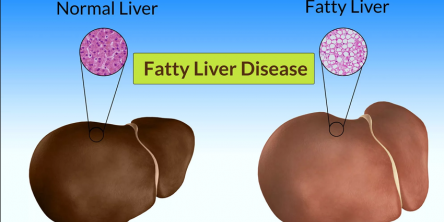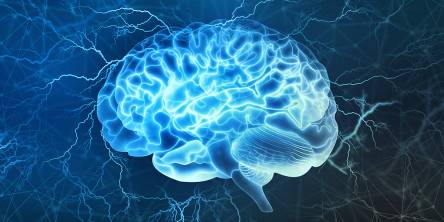The Best Pain Management Starts With A Pain Doctor

The term ‘pain management’ describes various types of strategies and therapies that are available in relieving pain. They also include ways to improve the quality of life for those who are affected by pain. This is especially relevant to anyone that has a disease, disorder or illness and has the associated chronic pain. The best pain management program will involve several health professionals as well as various specialists working together with the patient.
This group of professionals working together is an interdisciplinary method to the management of pain. Often, there is an agreement formed between each of these professionals will discuss the various therapies and/or treatments that can be applied among themselves and with the patient. The goal is optimal relief by way of pain management and the plans put in place, depending on the patient’s underlying condition that is causing their pain.
The human brain receives signals of pain from information-processing by way of the nerves. The observation of pain is seen as a reaction to harmful, deleterious stimuli that can result in psychological and psychomotor reactions.
On the other hand, glitches in the nerve tissue which creates noxious stimulation which may be the result of pain that isn’t in proportional to the provocation. Or it may persist beyond expectations of reasonable recovery, which is often the basis of a chronic pain state.
Acute pain, on the other hand, has a sudden onset that corresponds to an opposing event or stimulus and is typically transitory by comparison. Deleterious sensations that are linked to acute pain can be mild for some and severe for others. They are frequently related to a diagnosable disorder or injury and may persist for months, even several years.
A considerable decrease in normal functioning and/or mobility is the results of long-term pain. This is the perfect illustration how pain management has a valid role in a person’s life. When a pain lasts for 3 months or longer, it is defined as chronic pain by the General National Institutes of Health. It is possible for this timeframe to be different though dependent on explicit conditions. Chronic pain is considered as a serious healthcare issue as well as a serious socioeconomic issue.
The CDC (Centers for Disease Control and Prevention) reported that over 80% of adults will experience some level of acute pain or chronic back pain at least once in their life. And according to the Institute of Medicine, over 110 million people are suffering from chronic back in the America today.
Almost every human being experiences some type of pain. Although it is a very subjective experience, such as the feelings of pain is different between people even though they have the same situation. Because of this, it is a challenge for the measurement to be precise.
This fact is exceptionally challenging for those employed in pain management as well as research and science. While there are some people that will find pain excessively difficult to handle and maintain a level of functioning, others may not have any or very little issues.
Because of the varying degrees of individuals, doctors will assess the reports of pain carefully and create a pain management plan accordingly. By doing so, they doctor can effectively relieve a patient’s pain, and reduce the impact it has on their everyday life.
Pain can also have a noteworthy psychological and physiological effect on a person, especially when left untreated for a long period of time. It has been said that chronic pain has a undesirable effect on attentional, cognitive, and functions.
Pain can effect psychologically as well. For example, the feelings of anxiety, depression, fear, helplessness, and the inability to cope. Pain management can help to avoid or eliminate these things as well as possible suicidal thoughts for those having a serious case of pain.
Similar Articles
We often experience small discomforts or symptoms that seem insignificant, like headaches, fatigue, or brittle nails. Many times, we brush them off, thinking they’ll go away on their own. However, these minor issues might be your body’s way of telling you that something more serious is going on.
According to the World Health Organization (WHO), half to three-quarters of adult persons globally experienced a headache in the past year. Unfortunately, tension headaches are one of the most prevalent symptoms you can have. Furthermore, some tension headaches resemble migraine headaches, making matters worse.
The review of Yakrit Plihantak Churna is going to be amazing. You will know the facts, does it works along its benefits. The liver is the main engine of the body. It is the second largest gland in the body.
A podiatrist is a doctor who focuses on treating foot and ankle ailments. If you have specific medical issues, you may need to see a podiatrist for therapy that your primary doctor cannot offer. Don't overlook pain in your lower leg, foot, ankle, or toes.
A podiatrist is a medical expert who focuses on foot and ankle care. There are various reasons you may need to see one.
Swelling is a common issue that can strike anyone. Occasional leg swelling may occur after a long day on your feet or from sitting too long. However, if your legs are regularly swollen, it could indicate a serious underlying condition. Swelling can cause leg pain, loss of sensation, redness, and itching. If left unmanaged, it can lead to stiffness and difficulty walking.
Choosing the best aesthetic medicine courses will significantly boost your career. Medical professionals looking to expand their practice and stay ahead in the field of aesthetic medicine will find these training programs invaluable
Lower back pain is like a storm gathering over the horizon all day. The dull discomfort, the throbbing feeling, and the stiffness all add up until, like a thunderclap, it explodes into full-fledged pain. It penetrates your whole body, removing choice and control. Your mobility is restricted, making daily tasks difficult, and if not addressed, it can cause permanent damage.
Even though migraine affects over one billion people around the world, it has long been neglected as one of the most devastating diseases on the planet. Migraine headaches are a neurological disorder characterized by recurrent pounding or throbbing headaches, nausea and vomiting, and sensitivity to light, sound, and strong odors









